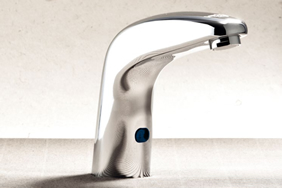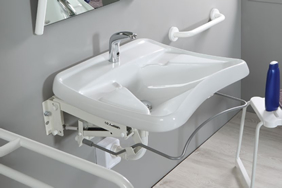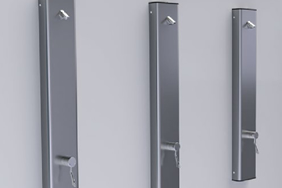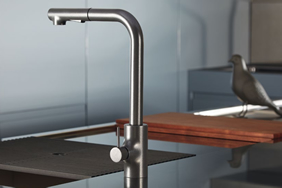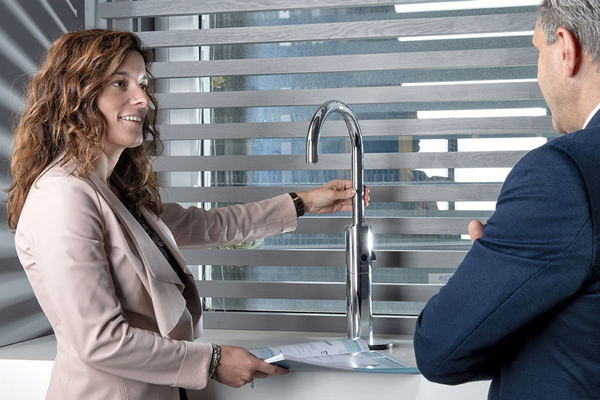
Attention to the health of toilet users and their cleanliness are basic requirements of any premises open to the public. In facilities with a high density of use, maintaining adequate hygiene standards is burdensome and not always possible, especially in men's toilets equipped with traditional ceramic toilets.
The installation of an adequate number of urinals, although subjectively questionable in terms of aesthetics, is the solution that guarantees a higher level of hygiene, as one does not come into contact with the ceramic parts and is not obliged to touch potentially contaminated surfaces such as closing barriers or handles, which are present in toilet rooms that are normally closed from view.
Over the years, users' needs have changed and led to different technical installation choices, each with its own advantages and disadvantages. Here are some alternatives:
Urinal with continuous water 'cascade'
| Consumption | Water is delivered continuously, even if the device is not in use | |
| Hygiene and safety in use | No human contact with surfaces |
Urinal with manual opening and closing tap
| Water consumption | |
The tap may be left open |
| Hygiene and safety in use | Tap must be opened and closed manually |
Urinal with timed/automatic tap closure
| Water consumption | Only the amount of water necessary for proper flushing is dispensed | |
| Hygiene and safety in use | The tap must be opened manually; closing is automatic |
Battery-mounted urinals with photocell "barrier" (wall-to-wall)
| Water consumption | Flushing starts when approaching and takes place simultaneously in all urinals in the battery, even if not in use | |
| Hygiene and safety in use | No human contact with surfaces |

The widespread use of infrared controls in faucets, their proven reliability and the possibility of implementing advanced safety features within them has naturally led to their application in washrooms of all types, including urinals.
The 02524 photocell urinal, with its construction and functional features, represents the optimal solution for male toilets.
The one-piece construction of the 02524 makes its installation quick and easy, even in the case of minimally invasive renovations. All that is needed is a 1/2" water connection and a nearby drain: art. 02524 with battery-operated control requires no electrical preparations or prior masonry work. The battery pack and power tap are external to the ceramic and allow the system to be installed and maintained without the need to remove the structure.
The photocell sensor is housed in the chrome-plated brass watershed, which is in turn integrated into the ceramic in the total absence of visible electrical connections or unsightly water supply piping.
The programming of the control unit ensures the cleaning of the ceramic by means of a controlled water flow and commands an automatic dispensing after a defined time of inactivity. The infrared sensor detects the presence of the user: if the user remains for at least 10 seconds, it programmes a draw-off which is only carried out after the user has left, thus preventing unpleasant splashing of water during use.
The long-lasting lithium battery guarantees operation for long periods but, wishing to avoid having to replace it, art. 02424/R is available with 230V mains power supply; the latter obviously requires a nearby mains connection or, better still, a predisposition with walled-in piping and flush-mounted junction box.
To complete the comparative evaluation we must therefore add:
Urinal art. no. 02524 with photocell control
| Water consumption | Water is supplied to the individual urinal and only after 10 seconds; only the amount of water required for proper flushing is dispensed | |
| Hygiene and safety in use | There is no human contact with surfaces |
In other words, performance has never been so reliable, safe and hygienic.
Contact Idral to learn more about finding the right solution for your public and commercial toilet projects.
by Alessandro Creola
Production manager





